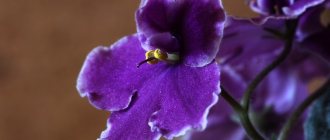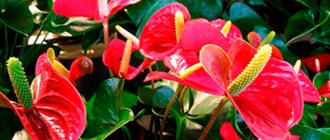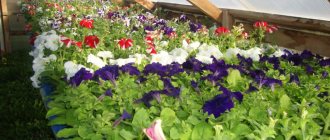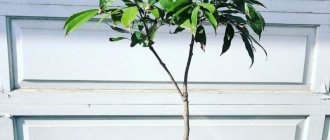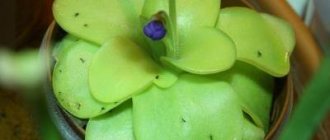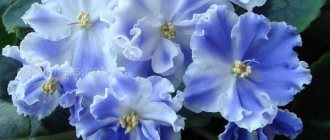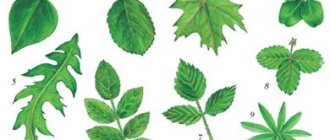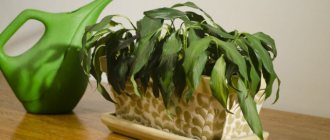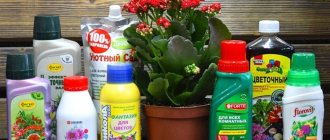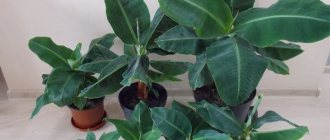Indoor plants can enliven and decorate any interior. Greenery calms us and fills the air with pleasant aromas. But houseplants also have their drawback: they need to be constantly looked after. And it's not just about watering. The soil needs to be loosened and fertilized, ensuring that it is fertile and healthy. If you don't have time to care for your plants, just grow them in water. Hydroponic flowers thrive even without soil. What plants can be grown in water? We'll tell you below.
Dracaena Sandera
Dracaena Sandera is an indoor bamboo that is distinguished by its unpretentiousness. To grow comfortably, it does not require special conditions at all. All you need is not too cold water, from which the dracaena will draw all its nutrients. Bamboo itself looks quite laconic and elegant. Yes, he won’t give you bright flowers. But it has quite large leaves, and the plant itself can grow to impressive sizes.
Interestingly, dracaena is very popular in the East. In Asia, it is placed in rooms to make their interior more harmonious. Bamboo is one of the main plants used in Feng Shui. Place its rhizome in a pot of water. Don't forget to change it from time to time: bamboo doesn't need more. If the plant does not hold well in the pot, add some pebbles or small stones to secure the stems.
“Everything hurts, but it’s bearable”: Pyotr Kuleshov admitted that he was vaccinated against COVID
An effective way to change laws: what the poor people of Ancient Rome did for this
Creating a bright image is real art therapy: sharing ideas
cacti
Cacti are extremely common among gardeners. They do not need to be watered often and you do not need to select a special pot for them to grow. Most often, people put small cacti in a pot filled with pebbles. Then it is lowered into another pot, larger than the previous one, it should be filled with water.
Cacti love light, but in winter they can be in complete shade. However, it is best to place these plants in a lighted place, because among them there are no shade-loving ones, only shade-tolerant ones.
Cacti also need to be provided with constant warmth. If they are cold or lack light, they will grow very poorly and may even die.
Monstera
Monstera is a large plant with massive rugged leaves. It is often placed in heavy pots with fertile soil. Yes, if you want to grow a big monstera, you can't do without soil. But small plants also thrive in water.
It is enough to place the monstera stem in a glass of water, and within a few days it will take root. The plant is generally distinguished by its endurance and unpretentiousness. It can survive in shade, moderate cold and even without soil. It can be placed in bathrooms and kitchens. Simply place the Monstera in a large glass pot and remember to change the water regularly.
Shallow water plants of fresh water
Common calamus (Acorus calamus)
Three-leaf watch (Menyanthes trifoliata)
Swamp iris (Iris pseudacorus)
Marsh marigold (Caltha palustris)
Forget-me-not (Myosotis palustris)
Pontederia cordata
Cattail (Typha latifolia)
Juncus effusus
Common arrowhead (Sagittaria sagittifolia)
Umbrella squirrel (Butomus umbrellatus)
Southern reed (Phragmites australis)
Common ponytail (Hippuris vulgaris)
Water buttercup (Ranunculus aquatilis)
Swamp butterfly (Hottonia palustris)
Spica urut (Myriophyllum spicatu m)
Azolla
Wolfia
Epipremnum aureus
Epipremnum is a perennial plant with small but variegated green leaves. It is known for its unpretentiousness. It can also be grown in soil. The only thing the flower needs is timely watering. Epipremnum comes from the tropics, so it loves humidity. Without moisture, it dries quickly, loses its beauty, and then dies. It loves water so much that it can grow and expand even without soil.
How to avoid mouse hand syndrome: posture and hand training
Sheep on the highway and other photographs for an international photo competition
The terminal of the Novosibirsk airport will be decorated with powerful columns in aviation style
To grow epipremnum, just place the torn stem in water. After a few weeks, the plant will take root and then begin full growth. New leaves will appear, and the stem itself will gradually lengthen. Be prepared to have to trim the roots from time to time. They won't stop growing until you replant them in the ground.
Main representatives
Cyperus
This is the most famous and unpretentious of indoor aquatic plants. Its triangular, strong stems, growing in a bunch, end in a lush “fountain” of leaves spreading to the sides. For such a characteristic appearance, Cyperus is often called “palm tree”. In fact, he belongs to the Osokov family. Its homeland is the wetlands of tropical Africa. Its closest relative is papyrus. And our pet is often called by a double name: Cyperus-Papyrus. This plant can be grown simply in a container of water. There is never too much water for him. The more it is, the more magnificent it grows. It is usually grown in flowerpots that stand in deep trays that are constantly filled with water.
Calla, or calla lily
The second most popular indoor plant, preferring to grow almost submerged in water. This marsh plant came to us from the subtropical regions of South America. Its charming snow-white blanket surrounding the bright yellow ear of the upward-pointing inflorescence looks solemn and elegant. Pots with calla lilies, like cyperus, feel best when placed in trays filled with water. The popularity of the flower is associated not only with its magical beauty, but also with the significant plasticity of the plant. Calla lilies can also grow in conditions of relative lack of moisture. True, in this case you can’t count on lush flowering.
Eichornia
It is also called water hyacinth. She is also surprisingly unpretentious. The main condition for it is water. In nature, Eichornia grows in the tropical part of South America. However, thanks to its vitality, it now grows successfully in many warm climates around the world, earning it the nickname “water plague.” Eichornia is often used by aquarists, growing it on the surface of the water. It also enjoys well-deserved attention from flower growers. This indoor aquatic plant prefers to grow in wide, but not small, containers of water, which are placed in a warm place with sufficient lighting. Drafts are extremely undesirable. In the summer, when conditions are most favorable for it, Eichornia will delight you with graceful lilac flowers, indeed, reminiscent of hyacinths.
Drooping reed
This plant is not distinguished by lush flowering, but its delicate thin thread-like leaves give it a peculiar charm. It is no coincidence that flower growers, touched by its airy appearance, gave it a number of affectionate names: “cuckoo tears”, “graceful isolepis”, “hair grass”. The young leaves of this reed first grow vertically. Gradually, becoming longer, they begin to bend, forming a lush bunch of thin green tubes with silvery lights of small rounded inflorescences at the tips. This allowed flower growers to humorously call this reed “fiber-optic grass.” It is for this reason that the flower looks most impressive in tall flowerpots standing in filled trays.
Bamboo
Many varieties of bamboo, especially low-growing varieties, are excellent for growing in water. But it does relatively well with less moisture. Maybe he can put up with some lack of light. Bamboo is very plastic both in terms of growing conditions and the ability to give it different shapes. It grows quickly, creating fancy bushes. There are a lot of varieties of bamboo; you can choose both low-growing and powerful plants.
Calamus cereal
This species is completely undemanding to growing conditions. The only thing he needs in large quantities is water. The modest appearance of the plant is not a reason to refuse to grow it in our homes. It perfectly complements compositions with calla lilies or bamboo. It is good to use for decorating a loggia or veranda. And in the summer, pots with calamus can be placed in a decorative pond at the dacha or in the garden. In any place, this plant will delight not only with its bright greenery, but also with a pleasant aroma reminiscent of tangerine.
Pontederia
This is a very showy plant with shiny leaves and flowers in lilac, blue or white. Its homeland is South, Central and North America, from tropical to warm temperate parts. The flower grows in shallow areas of rivers and lakes. Therefore, when cultivating pontederia, it must be planted in water to a depth of about 8 cm. The height of its bushes reaches half a meter. In summer, purple spike-shaped inflorescences appear among the bright heart-shaped leaves. Flowering continues all summer until almost half of autumn. Then the pontederia begins a period of rest, but its luxurious bushes do not lose their attractiveness.
Based on these moisture-loving plants, you can create various compositions that will decorate your home, make it cozier and more comfortable. There is no need to try to buy all of them; just choose three or four types you like. They will delight you all year round. Just don't forget to add water.
Ivy
There are many varieties of ivy that you can grow at home. All of them are quite easy to care for. They don't need a lot of light or fertilizer. If you want to grow ivy directly in water, try to choose miniature plants with small leaves. A flower that is too large may not have enough nutrition without soil.
Ivy does not like sudden changes in temperature, so keep it away from drafts. Do not place it next to a radiator or heater. If the plant gets too hot, it will begin to dry out and wilt. If the leaves begin to curl and dry out, spray them additionally to replenish the lack of moisture.
Rare aquatic plant for Russia suitable for human consumption
The answer is chilim, or water chestnut (Tgara natans). It is an aquatic plant with large greenish leaves, very similar to currant leaves. Long thin stems stretch from the leaves to the very bottom. If you lift them, then under the leaves on the stem you can see small blackish boxes with five spines. Chilim is similar in size and taste to chestnuts. The local population sometimes collects it in bags in the fall.
Chilim
In some countries, water chestnut (Tgara bicornis) is widely cultivated. Chilim can be eaten raw, boiled in salted water, baked in ashes like potatoes, or made into soup. Bread is baked from nuts ground into flour. Boiled fruits of this plant are sold everywhere in China.
Plectranthus
Plectranthus is one of the most famous hydroponic plants. It requires absolutely no maintenance, so it is often installed in offices and work areas. Plectranthus is especially popular in Asia, where people believe that this plant can bring its owners good luck in all matters related to money. It never blooms, but it will delight its owners with fairly large and bright leaves.
Anaerobic exercises, isometrics: deciphering common fitness terms
The doctor spoke about the expiration dates of antiseptics
Developer: It will be possible to get vaccinated with the CoviVac vaccine again
The plant does not need soil, so it feels good even in water. In it, it begins to actively grow roots. Be prepared to remove them from time to time so they don't fill the entire pot. Plectranthus is best placed on open windows where a lot of light falls. This plant does not tolerate shade and drafts.
Coastal
Plants growing along the perimeter of the reservoir define the border with the shore. These include:
- The aquatic plant arrowhead (sagittaria or common bogwort) is widely used for landscaping ponds, its root is represented by cord-like shoots with rounded tubers, immersed in water, the stem has a porous tissue filled with air bubbles, its length is 0.2-1.1 m. Above-water part has a petiole, the leaves are triangular in shape, similar to an arrowhead up to 30 cm long. In mid-June, sagittaria blooms and blooms until the end of summer with white flowers with a spherical middle; inside the petal there may be red or cherry spots. In total, there are about 40 species of mireweed, including decorative varieties. Many of them are used to decorate man-made ponds and go well with other aquatic plants.
- Reed or ocheret is a herbaceous plant from the Poaceae family, which is found in the middle zone in all reservoirs with a depth of up to 1.5 m, has hard stems that repel fish, has long rhizomes, from which long hollow stems grow up to 5 m in height. The reed inflorescence is a violet-silver panicle. Used in oriental medicine.
- Skirpus or reed is a perennial pond plant, growing up to 3.5 m tall, has a cylindrical strong stem and paniculate/capitate inflorescence, prefers swampy places. Many people confuse it with reed.
- Cattail, which is often confused with reeds, has a rigid stem with long leaves, at the end of which there is a beautiful brown velvet ear with seeds. Grows in reservoirs up to 1.5 m deep.
Sweet potato
Of course, you shouldn't expect to be able to harvest a full crop of sweet potatoes if you grow them in water. But the plant can grow, decorating the room with curly branches with large leaves. In appearance, the sweet potato resembles ivy.
To plant this plant, place the sweet potato fruit in a bowl of water. Leave it there for a few weeks until it takes root. After this, it can be transplanted into a pot with soil or left in water. The sweet potato will begin to slowly but surely stretch in length, growing more and more new stems. Don’t forget to change the water promptly and cut off dried branches.
General recommendations for growing
When choosing plants for the bathroom, you should remember that even the most moisture-loving people need fresh air. Good ventilation of the room is required to prevent rotting and fungal diseases. When humid air stagnates, mold appears in the bathroom, and powdery mildew appears on plants, which is very difficult to combat.
The temperature at which most green pets will be comfortable is 20 – 22°C.
As the leaves become dirty, they are wiped with a soft washcloth, and the plants are bathed with warm water from the shower.
In indoor conditions, moisture-loving house flowers need regular spraying, which takes a lot of time. High humidity in the bathroom allows you to do without these procedures.
The health and decorative appearance of indoor flowers largely depends on lighting and choosing the right place for each of them.
Plant placement ideas
The space of a standard bathroom is most often limited to a few square meters. Therefore, plant compositions should be as compact as possible. Designers offer several universal principles for arranging plants:
- Vertical space should be used as much as possible. The most popular option is hanging hanging plants. They can also “frame” a mirror by building a small shelf above it. On a free wall you can arrange a whole rack with flowerpots.
- It is better to place the heaviest pots with large plants on the floor in the free corners of the room.
- Lush, bushy plants look good on dressers and low cabinets, as well as on shelves above the front door.
- When creating compositions, low and most decorative specimens with beautiful leaves are placed in the foreground.
- Using mirrors is a win-win option, especially for a small bathroom. Placing pots of flowers opposite mirrors will create the illusion of increased space.
What not to do
The bathroom is a technical room, which, first of all, should be comfortable and safe. Hence the main rule: plants and people should not interfere with each other. That's why:
- Flower pots are not placed on the walkway.
- Large specimens are not grown in small spaces.
- Do not place containers on unstable surfaces (for example, washing machines) and carefully check the reliability of the fastenings of hanging flower pots.
- For hanging structures, it is better to plant plants not in ceramic pots, but in lightweight plastic ones.
- Do not place containers with plants where they can cause injury.
- Flowerpots should not be placed near heated towel rails or heating appliances.
Note: Drops of soapy water and splashes from cleaning products are dangerous for plants: they cause stains and burns on leaves and stems. When contacted with soil, such substances cause soil poisoning and can lead to the death of the root system. Therefore, flowerpots are not placed in the immediate vicinity of a bathtub or shower. During cleaning using cleaning products (especially from a spray bottle), flower pots are covered with protective material (paper, fabric, polyethylene) or transferred to a safe place.
Organization of lighting
Under natural conditions, plants absorb daylight selectively. For normal growth, they need light waves in the red, blue, violet and ultraviolet ranges of the spectrum. Very little yellow light is absorbed, and green light is almost completely reflected. This means that ordinary incandescent lamps are not suitable for illumination: their spectrum is dominated by waves in the green and yellow-red ranges, but does not contain the necessary blue color. Moreover, they are not economical.
The following types of fluorescent lamps operate in the most suitable ranges:
- LD – fluorescent lamps;
- LE – natural light lamps;
- LED lamps LED.
They are safe, economical and closely match the spectrum of sunlight, so they are optimal for use at home. A variety of LED lamps allows you to combine the illumination of plants with the design of the room.
Note: In recent years, phytoLEDs (phytolamps), usually two-color, have been actively used to illuminate plants. Their spectrum is indeed suitable for illuminating seedlings and flowers, but is extremely unfavorable for human vision. Therefore, in residential premises, phytolamps are used to a limited extent or are equipped with reflectors, which are purchased in specialty stores for plants or aquariums.
Rules for illuminating plants:
The duration of the “daylight hours” for shade-tolerant plants is 8–9 hours. During this time, the lamps must operate continuously, taking into account the following points:
- For shade-loving plants, the illumination height is 30 – 60 cm (depending on the needs of the plant).
- It is advisable to install the lamps directly above the plant, perpendicular to its surface. If the light source is placed at an angle, the stems and flowers will stretch in its direction.
- Lighting should be regular. The lamps are turned on at the same time every day, optimally in the morning at 7 - 8 o'clock. Violation of the regime leads to a disruption in the biorhythms of plants, which will inevitably affect their condition.
- At least occasionally, take the plants out into natural sunlight for a few days to allow them to gain strength.
The desired height of the light source can be set using adjustable pendant lights or lamps on tripods. Wall brackets are used to secure the lamp permanently. You can also come up with illuminated shelves.
If installation of additional lighting is possible only on the ceiling, then light loss should be taken into account, which is proportional to the square of the distance to the light source. It can be partially compensated. To do this, plastic or metal reflectors (reflectors) are installed on the body of the fluorescent lamp. These simple devices “collect” the light flux and orient it in a given direction (in this case, down).
For pendant lighting, light loss can be reduced using directional light fixtures. In this case, the function of reflectors is performed by open opaque lampshades.
Fluorescent lamp with reflector.
Good offers on phytolamps:
Calculation of lighting power using fluorescent lamps as an example
The required number of lamps is determined by the following parameters:
- luminous efficiency of a particular lamp (expressed in Lm/W and indicated by the manufacturer, excluding light loss);
- illuminated surface area;
- the needs of plants for a certain level of illumination (expressed in lux and for shade-loving plants is 5000 - 10000 Lux);
- height of the light source.
The procedure for determining the number of lamps with a power of 36 W and a luminous flux of 2500 lm to illuminate an area of 1 m² from a height of 30 and 60 cm:
- The luminous efficiency of the lamp is calculated from the ratio of luminous flux to power consumption: 2500: 36 ≈ 70 Lm/W.
- Luminous flux required by plants: 7000 Lux × 1 m² = 7000 Lux (since the surface illumination is uneven in any case, the average value of the required one is taken - 7000 Lux).
- Light loss at a height of 30 cm will be 30%, at a height of 60 cm – 50%. Thus, the luminous flux value should be increased by 30% (1.5 times) or 50% (2 times) for each case, respectively. 7000 Lm × 1.5 = 10500 Lm; 7000 Lm × 2 = 14000 Lm.
- Total lamp power in each case: 10500 Lm: 70 Lm/W = 150 W; 14000 Lm: 70 Lm/W = 200 W.
- 150 W: 36 W ≈ 4 pcs; 200 : 36 ≈ 6 pcs.
That is, for shade-loving plants occupying an area of 1 m² at a height of 30 cm, it is enough to install 4 fluorescent lamps with a power of 36 W. At a height of 60 cm you will need at least 6 of the same lamps. The specified parameters correspond to Osram brand fluorescent lamps with a length of 120 cm.
Knowing the power of the lamps, you can calculate the daily power consumption by multiplying 8 hours by 150 or 200 W. The result will be 1.2 kW and 1.6 kW per day, respectively, or 36 kW and 48 kW per month. Knowing the cost of electricity in your region, it is easy to calculate the monthly/annual costs for such lighting.
Aglaonema
Aglaonema is a small plant, notable for its massive yellow-green leaves with red veins. It does not tend to grow, so it does not have to be trimmed and trimmed. Aglaonema grows well both in soil and in water, but it will be an excellent addition to even a minimalist interior. Its roots also do not grow, so the flower can be placed in small pots. Just remember to change the water promptly so that the plant does not lack nutrition.
A coronavirus mutation “invisible” to PCR tests has been identified in France
Dangerous not only for humans, but also for the Earth: how to protect yourself from magnetic storms
Parents' Saturday (March 27): a big mistake of almost all believers on this day
Syngonium
Syngonium is another unpretentious plant that is widely used to decorate offices and work spaces. It will easily fit into any design, but will not require special care. Syngonium has bright and shiny green leaves, which also exude a pleasant herbaceous aroma.
The plant can be placed in a small pot of water and left there for several months. Syngonium grows equally well both in the sun and in the shade. It is also quite resistant to temperature changes, so it can even be placed on window sills with light drafts.
Calla lilies
Whitewing is the second name of the flower. They can stay fresh for about 2-3 weeks in a vase with water, but they need to be kept in the right conditions. Cut callas can grow on moisture-intensive substrates. At the same time, caring for them is the same as when growing in ordinary soil.
It is necessary to promptly remove yellow leaves, separate young shoots, and treat them against diseases and pests. Callas do not feel oppressed, even if they are in such a substrate for a long time.
Fertilizers are periodically added to it and the plants are fed. They also need regular ventilation and shade from the sun.
Tradescantia
Tradescantia has many varieties, and they are all distinguished by their unpretentiousness. It is usually grown in miniature pots, since the flowers do not tend to grow. Tradescantia is known for its dark green leaves with a bluish undertone. They are attractive because they are cut with bright white and purple stripes.
Any variety of Tradescantia can be grown directly in water. Cut any large stem from the plant and place it in the liquid. In a week or two it will take root. After this, you can transplant the flower into a pot, or you can leave it directly in the water. It needs to be changed when it starts to darken and oxidize. Tradescantia does not require any other special care.
What water should I grow in?
Aquariums in apartments are most often filled with water from the tap. But water freshly drawn from the tap will not work - it must be prepared in advance. Cold tap water should be left for a week. During this time, harmful substances will disappear and the water will reach the desired temperature.
Using special tests for aquarium water, its parameters are determined, if necessary, the hardness and acidity of the water is normalized and additional mineralization is carried out.
- Water hardness can be increased by adding a piece of chalk or limestone, and reduced by boiling or diluting with rainwater.
- The acidity of the water is reduced with baking soda and increased with a small amount of peat.
Spathiphyllum
Spathiphyllum is an indoor flower, distinguished by its elongated leaves and massive white buds. It is often grown in soil, but the plant will actually be much more comfortable in water. Hydroponics is the ideal way to propagate spathiphyllum. In order for the plant to bloom profusely, nutrient mixtures will have to be added to the water. But even without them, spathiphyllum grows quite well.
